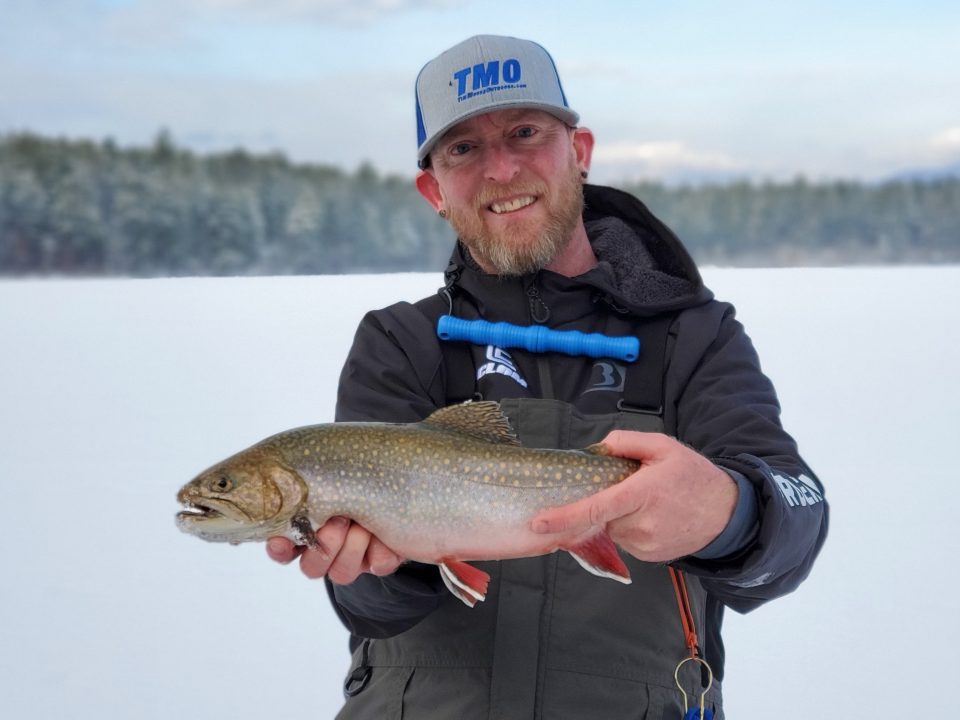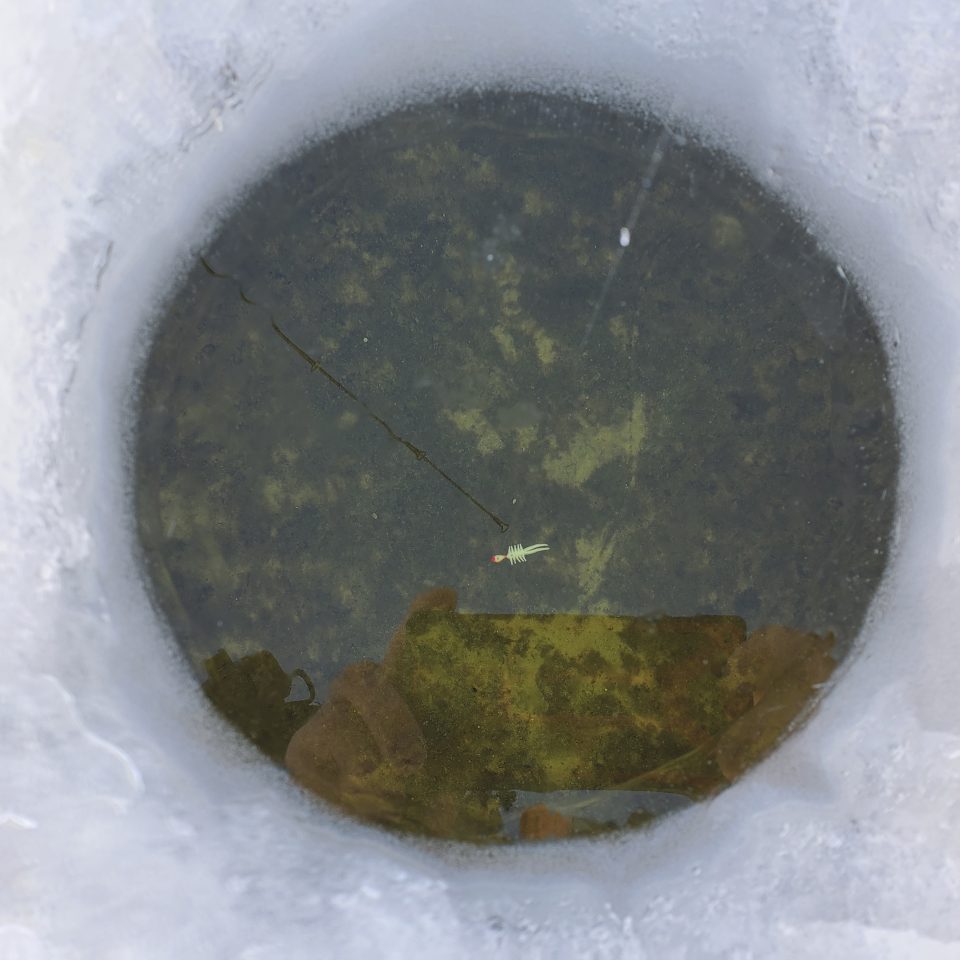Early-Ice Trout Fishing
By Tim Moore

Some of the first ice fishing opportunities for anglers in New England are often for shallow water trout. Many states offer opportunities to catch trout outside of regular trout seasons by stocking trout for winter anglers in waters with no closed season. Once trout waters freeze, rainbow and brook trout can be caught in as little as a foot of water, which means you can safely venture onto thin shoreline ice while you wait for your regular spots to thicken up. The exhilaration of fishing on just a few inches of crystal clear ice and watching fish swim in from a distance to devour your lure may very well turn you into a trout fishing addict.
During the open water months, trout normally avoid shallow water because of warmer water temps and because being in shallow water leaves them vulnerable to aerial attacks from birds of prey, and shoreline threats from predatory mammals and people. However, as soon as the water freezes, the fish have less to worry about and they move into shallow water to feed. They are wary, spook easily. Stealth is key when fishing in shallow water through thin ice. Winter trout fishing in many areas can become a bit contested, especially among hardcore trout anglers. Some see catching freshly stocked trout as less than, and then there are those who are champing at the bit so badly to get on the ice that they see this as a warmup, a precursor if you will, to the ice fishing season ahead. Besides, many of the winter stocked trout are retired brood stocks. They’re big and beautiful. If you find this sort of fishing fun, don’t listen to the naysayers. If you bought a fishing license, you helped pay for those fish. Go catch them if you want to.

Rainbow and brook trout prefer sandy bottom. During the winter months they constantly cruise shallow water and scour the bottom for whatever insects, eggs, or baitfish they can find. On water bodies with rainbow and brook trout, you will often find clusters of fish houses gathered around town beaches, all targeting trout, but some hardcore trout ice anglers will venture off to lesser-known areas with less fishing pressure and noise. Private beaches or secluded sandy areas will provide your best chance at better numbers and bigger fish.
One of the most popular techniques for rainbow trout is to drill many holes along a shoreline in 12”-24” of water as soon as you arrive at your fishing location. Set tip ups (or jig rods) rigged with a small hook tipped with a salmon egg in some of the holes and, in states that allow it, drop three salmon eggs in the remaining holes. Silently inspect each of the holes with salmon eggs every 20-30 minutes. If the salmon eggs are gone, move one of your lines into that hole. Rainbows are territorial and will defend a food source. Once they find your salmon eggs, as long as you don’t spook them out to badly, they will hang around looking for more food.
Brook trout will also frequent sandy areas, but they especially congregate in front of stream inlets to capitalize on any food that washed in. Use caution when fishing these areas, because the moving water will keep the ice thinner than surrounding areas. It might not present an immediate safety concern, but a wet leg can end a trip. Drill several holes in depths from 12”-36” around the front and sides of the inlet. A 1/8 ounce white or red blade spoon from Clam Pro Tackle tipped with a white w/red flake Maki Minnow Head is almost irresistible to hungry brook trout. Keep the blade spoon moving, stay alert, and stay still. Watch the edges of the hole you’re fishing. Brook trout may swim around for several minutes before committing to eat your bait. A wisp of silt off to the side of the hole is a telltale sign that a fish is interested in your offering, and it may dart in at any moment and devour your lure, so stay focused.

The addition of a camera system will add an element of excitement to your trip by letting you watch fish take your bait, it will also help you determine how the fish are behaving toward a certain lure or cadence. If there is a disadvantage to shallow water sight-fishing, it’s that fish can be nearby without you knowing it. One wrong move of your foot will spook warry fish in a heartbeat, sometimes for good. A camera lets you see a larger area, so you know when to be extra quiet, and ready.
Remember, there is no such thing as truly safe ice. You still need to use caution and check ice thickness as you go, but for the most part the only thing you have to fear when shallow water trout fishing is wet feet if you break through. Use stealth to your advantage, but stay mobile. Trout rarely sit in one spot, so you shouldn’t either. Experiment with different colors, presentations, and jigging cadences until you find the combination that best triggers bites and as always, have fun, be safe, and catch fish.
Tim Moore is a full-time year-round fishing guide in New Hampshire. He owns and operates Tim Moore Outdoors, LLC. He is a member of the New England Outdoors Writers Association, and the producer of TMO Fishing on YouTube and the Hooked with TMO Fishing Podcast. Visit www.TimMooreOutdoors.com for more information.